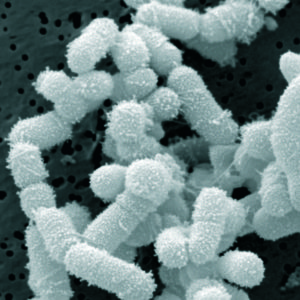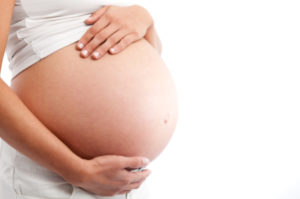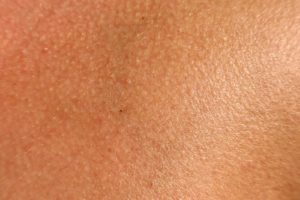 Yesterday I read and reread a very interesting journal review paper from Sept. 2013 that discussed recent studies about probiotics and treatment of respiratory ailments, including sinusitis. Two of the authors are those from the Abreu et al sinusitis study from 2012 (that I've frequently mentioned and that guided our own Sinusitis Treatment) that found that Lactobacillus sakei protects against sinusitis and treats sinusitis. Some of the things this paper discussed are: microbial communities in the airways and sinuses vary between healthy and non-healthy individuals (and each area or niche seems to have distinct communities), that lactic acid bacteria (including Lactobacillus sakei) are generally considered the "good guys" in our sinus microbiomes (the communities of microbes living in our sinuses), and that treatments of the future could consist of "direct localized administration of microbial species" (for example, getting the bacteria directly into the sinuses through the nasal passages with a nasal spray, or dabbing fermented kimchi juice like I did). They also mentioned that maybe one could also get probiotics to the GI tract (e.g., by eating probiotics) and maybe this would have some benefits. So far it seems that administering something containing L.sakei directly (by nasal spray or dabbing kimchi juice - as I did) seems to work best for treating sinusistis.
Yesterday I read and reread a very interesting journal review paper from Sept. 2013 that discussed recent studies about probiotics and treatment of respiratory ailments, including sinusitis. Two of the authors are those from the Abreu et al sinusitis study from 2012 (that I've frequently mentioned and that guided our own Sinusitis Treatment) that found that Lactobacillus sakei protects against sinusitis and treats sinusitis. Some of the things this paper discussed are: microbial communities in the airways and sinuses vary between healthy and non-healthy individuals (and each area or niche seems to have distinct communities), that lactic acid bacteria (including Lactobacillus sakei) are generally considered the "good guys" in our sinus microbiomes (the communities of microbes living in our sinuses), and that treatments of the future could consist of "direct localized administration of microbial species" (for example, getting the bacteria directly into the sinuses through the nasal passages with a nasal spray, or dabbing fermented kimchi juice like I did). They also mentioned that maybe one could also get probiotics to the GI tract (e.g., by eating probiotics) and maybe this would have some benefits. So far it seems that administering something containing L.sakei directly (by nasal spray or dabbing kimchi juice - as I did) seems to work best for treating sinusistis.
They also discussed that lactic acid bacteria are found in healthy mucosal surfaces in the respiratory, GI, and vaginal tract. They then proposed that lactic acid bacteria (including L.sakei) act as pioneer, or keystone species, and that they act to shape mucosal ecosystems (the microbiomes), and permit other species to live there that share similar attributes, and so promote "mucosal homeostasis". It appears that having a healthy sinus microbiome protects against pathogenic species.
So yeah - the bottom line is that microbial supplementation of beneficial bacteria seems very promising in the treatment of respiratory ailments. And for long-term successful sinusitis treatment, one would need to improve the entire sinus microbial community (with a "mixed species supplement"), not just one bacteria species. (By the way, maybe that is also why using kimchi in our successful Sinusitis Treatment works - it is an entire microbial community with several lactic acid species, including the all important Lactobacillus sakei. (NOTE: See Sinusitis Treatment Summary page and The One Probiotic That Treats Sinusitis for some easy methods using various probiotics to treat chronic sinusitis. These articles get updated frequently.) From Trends in Microbiology:
Probiotic strategies for treatment of respiratory diseases.
More recently, Abreu et al. profiled the sinus microbiome of CRS (chronic rhinosinusitis) patients and healthy controls at high resolution [2]. Microbial burden was not significantly different between healthy subject and CRS patient sinuses. Moreover, known bacterial pathogens such as H. influenza, P. aeruginosa, and S. aureus were detected in both healthy and CRS sinuses; however, the sinus microbiome of CRS patients exhibited characteristics of community collapse, in other words many microbial species associated with healthy individuals, in particular lactic acid bacteria, were significantly reduced in relative abundance in CRS patients. In this state of microbiome depletion, the species C. tuberculostearicum was significantly enriched. This indicates that composition of the microbiome is associated with disease status and appears to influence the activity of pathogens within these assemblages.
Although sinusitis patients in the Abreu study exhibited hallmark characteristics of community collapse, the comparator group – healthy individuals – represented an opportunity to mine microbiome data and identify those bacterial species specific to the sinus niche that putatively protect this site. The authors demonstrated that a relatively diverse group of phylogenetically distinct lactic acid bacteria were enriched in the healthy sinus microbiota [2]. As proof of principle that the sinonasal microbiome itself or indeed specific members of these consortia protect the mucosal surface from pathogenic effects, a series of murine studies were undertaken. These demonstrated that a replete, unperturbed sinus microbiome prevented C. tuberculostearicum pathogenesis. Moreover, even in the context of an antimicrobial-depleted microbiome, Lactobacillus sakei when co-instilled with C. tuberculostearicum into the nares of mice afforded complete mucosal protection against the pathogenic species. Although this is encouraging, it is unlikely that a single species can confer long-term protection in a system that is inherently multi-species and constantly exposed to the environment. Indeed, previous studies and ecological theory supports the hypothesis that multi-species consortia represent more robust assemblages, and tend to afford improved efficacy with respect to disease or infection outcomes [44,45]. This study therefore provides a basis for the identification of what may be termed a minimal microbial population (MMP) composed of multiple phylogenetically distinct lactic acid bacteria, including L. sakei. Such a mixed species assemblage would form the foundation of a rationally designed, sinus-specific bacterial supplement to combat established chronic diseases or, indeed, be used prophylactically to protect mucosal surfaces against acute infection.
Therefore, although site-specific diseases such as chronic sinusitis may well be confined to the sinus niche and be resolved simply by localized microbe-restoration approaches, it is also entirely plausible that an adjuvant oral microbe-supplementation strategy and dietary intervention (to sustain colonization by the introduced species) may increase efficacy and ultimately improve long-term patient outcomes. This two-pronged approach may be particularly efficacious for patients who have lost protective GI microbial species due to
administration of multiple courses of oral antimicrobials to manage their sinus disease.
Although it is impossible to define the precise strains or species that will be used in future microbial supplementation strategies to treat chronic inflammatory diseases, there is a convergence of evidence indicating that healthy mucosal surfaces in the respiratory, GI, and vaginal tract are colonized by lactic acid bacteria. We would venture that members of this group act as pioneer, keystone species that, through their multitude of functions (including bacteriocin production, competitive colonization, lactate and fatty acid production), can shape mucosal ecosystems, thereby permitting co-colonization by phylogenetically distinct
species that share functionally similar attributes. Together, these subcommunities promote mucosal homeostasis and represent the most promising species for future microbe-supplementation strategies.

 I spent time this past week searching the medical literature (US National Library of Medicine - Medline/PubMed) for the latest in sinusitis research. I wish I could tell you that amazing research has been happening recently, especially with the sinus microbiome (which could mean treating sinusitis with microbes), but I was disappointed. Really disappointed.
I spent time this past week searching the medical literature (US National Library of Medicine - Medline/PubMed) for the latest in sinusitis research. I wish I could tell you that amazing research has been happening recently, especially with the sinus microbiome (which could mean treating sinusitis with microbes), but I was disappointed. Really disappointed. Of course we should expect to find bacteria in a healthy placenta. It only makes sense. But this is interesting stuff - the possibility that the placental biome being out of whack playing a role in preterm birth. From Medical Xpress:
Of course we should expect to find bacteria in a healthy placenta. It only makes sense. But this is interesting stuff - the possibility that the placental biome being out of whack playing a role in preterm birth. From Medical Xpress: Now we need ways to nurture our skin bacteria. From Science Daily:
Now we need ways to nurture our skin bacteria. From Science Daily: